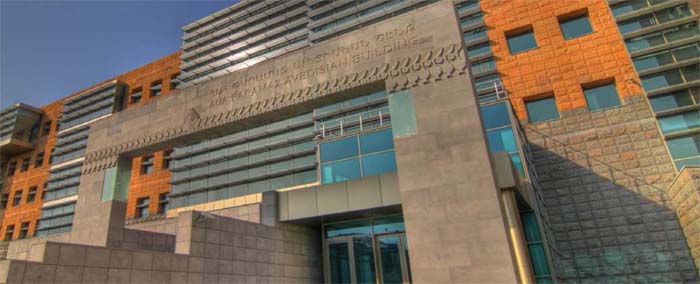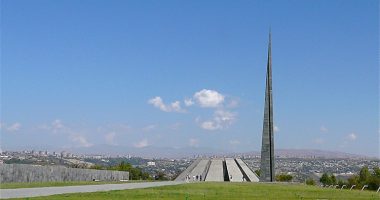YEREVAN — The Armenian Genocide Museum is currently closed because of the reconstruction and it will introduce new exhibition to the visitors by April 24, 2015. The Deputy Director of the Armenian Genocide Museum-Institute adjunct to the National Academy of Sciences of the Republic of Armenia Suren Manukyan stated this at the course of the press conference held on December 9. According to Manukyan the territory of the museum will be enlarged 2.5 times due to the reconstruction. The first temporary exhibition after the reconstruction will be held in 2014 on the occasion of the 100th anniversary of the World War I. Among other things the Deputy Director of the Armenian Genocide Museum-Institute adjunct to the National Academy of Sciences of the Republic of Armenia Suren Manukyan underscored: “The main exhibition of the museum will be reopened on April 24, 2015 with new content and technical maintenance.”
The Armenian Genocide Museum opened its doors in 1995, concurrently commemorating the eightieth anniversary of the Genocide. The Museum structure, planned by architects S. Kalashian, A. Tarkhanyan and sculptor F. Araqelyan, has a unique design.
During the decennial activity the Museum received many visitors including schoolchildren, college students and an unprecedented number of tourists both local and abroad.
The museum provides guided tours in Armenian, Russian, English, French and German.
The Republic of Armenia has made visiting the Armenian Genocide Museum part of the official State protocol and many foreign official delegations have already visited the Museum. These delegations have included, Pope John Paul II, President of the Russian Federation V. Putin, President of the Republic of France J. Shirak, and other well-known social and political figures.
The impressive two-story building is built directly into the side of a hill so as not to detract from the imposing presence of the Genocide Monument nearby. The roof of the Museum is flat and covered with concrete tiles. It overlooks the scenic Ararat Valley and majestic Mount Ararat.
The first floor of the Museum is subterranean and houses the administrative, engineering and technical maintenance offices as well as Komitas Hall, which seats 170 people. Here also are situated the storage rooms for museum artifacts and scientific objects, as well as a library and a reading hall. The Museum exhibit is located on the second floor in a space just over 1000 square meters. There are three main indoor exhibit halls and an outer gallery with its own hall.
The Genocide Monument is designed to memorialize the innocent victims of the first Genocide of the 20th century. The Genocide Museum’s mission statement is rooted in the fact that understanding the Armenian Genocide is an important step in preventing similar future tragedies, in keeping with the notion that those who forget the past are condemned to repeat it.










